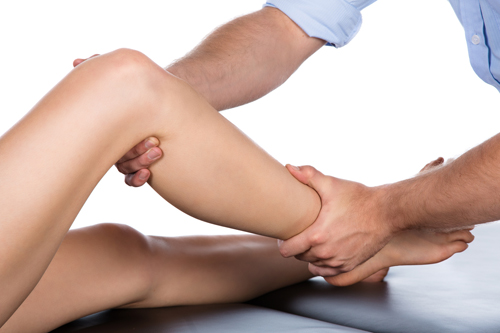Osteoarthritis is a joint disease leading to the destruction of cartilage. It is characterised by pain, stiffness and loss of function. 10 million French people are affected, 65% of whom are over 65 years old.
The cause: ageing, heredity, metabolic abnormalities and certain diseases.
Osteoarthritis is the most common disease, characterised by a destruction of the cartilage that extends to all the joints, particularly the bone and synovial tissue. Magnetic therapy is a natural solution for pain relief.

Destruction of cartilage
Cartilage lines the bony ends of a joint, allowing them to glide over each other. In osteoarthritis, it loses thickness, cracks and eventually disappears. This leads to pain and a major handicap with a loss of mobility. At present, the mechanisms of this degradation are poorly understood and are the subject of active research.
However, several risk factors have been identified
The destruction of cartilage is a pathological process linked to
- Age: osteoarthritis affects 3% of people under 45, 65% of people over 65 and 80% of people over 80;
- Metabolic disorders generated by diabetes or obesity
- Excessive pressure: being overweight, frequently carrying heavy loads, too much physical activity or poorly controlled practice of certain sports increase mechanical stress, contributing to damage to the cartilage
- Certain joint diseases such as chondrocalcinosis (calcium deposits in the cartilage), osteonecrosis (death of a bone segment caused by a lack of blood supply) or rheumatoid arthritis (chronic inflammatory disease of the joints)
- The natural fragility of cartilage and certain anatomical anomalies or traumatic sequelae (joint fracture, neglected sprain, dislocation, meniscus removal)
- Heredity is a risk factor in certain cases, particularly for osteoarthritis of the hands.
The diagnosis is based on a clinical examination and X-rays of the joint. The X-rays allow us to observe the pinching of the joint space that joins the bones.
All joints can be affected
The frequency of the disease varies according to the location:
- Osteoarthritis of the spine accounts for 70-75% of the 65-75 year olds, most often the disease remains silent.
- Osteoarthritis of the fingers, which results in irreversible deformities, affects 60% of people;
- Osteoarthritis of the knee and hip affect 30% and 10% of people aged 65 to 75 respectively; they are more disabling because they affect the joints that carry the body's weight.
All other joints can be affected, but the shoulder, elbow, wrist and ankle are more rarely affected.
An unpredictable evolution
In osteoarthritis, cartilage damage does not regress, but its progression is not linear. The evolution can be rapid and make it necessary to fit a prosthesis in less than 5 years (for example in the case of osteoarthritis of the hip). The disease can also evolve slowly, over several years, without causing any major handicap.
Two states follow one another at an unpredictable pace
- Chronic phases, during which the daily discomfort is variable and the pain moderate
- Acute attacks of pain accompanied by inflammation of the joint, during which the pain is severe, occurring in the morning and sometimes at night.
During the chronic phase, regular physical activity is strongly recommended, but during the painful attacks, the joint must be rested. It is during this phase that the cartilage is destroyed.
Medicinal treatments include analgesics, non-steroidal anti-inflammatory drugs (NSAIDs), corticosteroid injections, hyaluronic acid injections, and joint lavage, which is applied to the knee joint and removes cartilage debris with saline solution (under local anaesthetic).
Magnetic therapy has proven to be a successful treatment for osteoarthritis. Auris offers a wide range of solutions to suit everyone.
